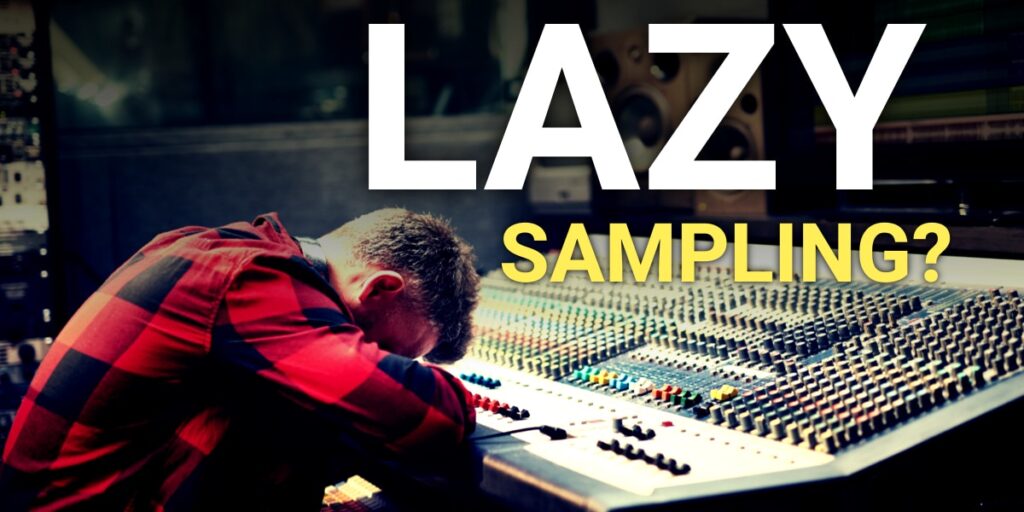There’s a growing debate about the latest trend in popular music – lazy sampling.
But what exactly is lazy sampling?
It’s when a producer takes shortcuts by capitalizing on popular songs without contributing anything new. It’s the easy route, the quickest path to the top of the music charts.
What lazy sampling looks like
Take, for instance, Jack Harlow’s sampling of “Glamorous” on his hit record “First Class.”
Or Coi Leray’s popular song “Players” sampling Grandmaster Flash & The Furious Five’s “The Message.”
These are clear cases of lazy sampling. Not much creativity besides lifting the sample and updating the beat.
As mainstream hits, these songs give sampling a bad reputation. They’re the perfect reference points for sampling’s biggest haters – those who think it’s about taking someone else’s music, copying and pasting it, and then claiming it as your own.
Even worse, this phenomenon is nothing new. It goes back to the Bad Boy era of hip-hop, where Puff Daddy made hits with similar tactics.
What creative sampling looks like
Hank Shocklee, a respected figure in the music industry, challenges the notion of lazy sampling. He argues that sampling is a complex art form that requires skill and creativity. It’s not about copying and pasting; it’s about finding the perfect piece to sample and then reimagining it in a fresh and innovative way.
A Tribe Called Quest understood this concept well. In their hit “Can I Kick It?” they creatively incorporated Lou Reed’s “Walk on the Wild Side,” giving it a whole new vibe and meaning.
Similarly, J Dilla’s track “Little Brother” is another example of creative sampling, where familiar elements are transformed into something entirely new and unexpected.
Breaking free of the “lazy sampling” trap
So, how do producers avoid falling into the trap of lazy sampling? The answer lies in digging deep for unique and unexpected samples. Take it from Diamond D, a pioneer in hip-hop production, who made it a priority to seek out fresh and unfamiliar sounds. He believed that the key to creating special music lies in selecting samples that are not cliché or overused.
DJ Premier exemplified this approach when he sampled a silent film score from the 1920s to create the hip-hop classic “Represent” by Nas. It’s a perfect example of true creativity in sampling, where familiar elements are repurposed in innovative ways.
And let’s not forget M.I.A. and Diplo’s use of The Clash’s “Straight to Hell” riff in “Paper Planes.” It’s a prime illustration of how artists can take familiar elements and put their own unique spin on them, adding value instead of simply feeding off the success of the original work.
Remember, the key to effective sampling lies in finding unique ways to use samples. It’s about adding your own twist and pushing the boundaries of creativity.
So the next time you hear an unfamiliar sample in a song, take a moment to appreciate the artistry behind it. Because in the hands of a skilled producer, a sample isn’t just a snippet of someone else’s music—it’s a building block for something entirely new and exciting.
